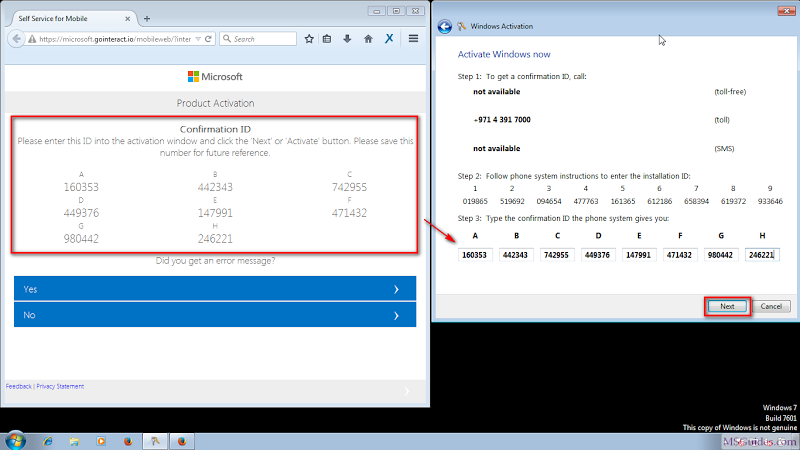

The same activation procedure is applicable even if you have purchased the Windows 10 license. Of course, Windows 10 may ask for the Product key while you are reinstalling, but you can just skip past it. Simply put, after the initial activation, you are no longer required to have the Product key with you all the time. Once activated, whenever you reinstall the Windows 10 OS, your system will activate automatically by checking in with the Digital Entitlement certificate in the cloud as long as you don’t change the major system hardware like the motherboard. Microsoft uses this information to activate Windows 10. the computed hash value of your system hardware. Once the certificate has been generated, it will be stored in the cloud alongside your Installation ID, i.e. If your system is properly activated, Microsoft servers generate the license certificate or the Digital Entitlement certificate as Microsoft calls it.

WINDOWS INSTALLATION ID WINDOWS 10 UPGRADE
Whenever you try to upgrade from Windows 7 or 8 to Windows 10, the system first checks if you are a genuine user by checking if your previous installation of Windows was activated properly or if you are not using the Software Licensing Manager utility. Windows 10 Activation ProcedureĬonsidering the fact that Windows 10 is free for all genuine Windows 7 and 8 users, the activation procedure has changed quite a bit. So, when you reinstalled your operating system on the same hardware with the same unique Product key, Windows would activate automatically. When you tried to activate your machine with the unique product key for the fist time, Windows created the so-called Installation ID by calculating the hardware hash value and stored it alongside the Product key.


 0 kommentar(er)
0 kommentar(er)
